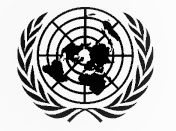Uncrewed systems – often colloquially referred to as “drones” – can be deployed in a variety of domains, including in the aerial, ground and maritime domains. In his policy brief on a New Agenda for Peace, the Secretary-General noted the proliferation of uncrewed systems in armed conflicts. Such systems have been used to attack civilian targets, including critical infrastructure, and have presented a threat to peace operations. Uncrewed systems are also addressed in the annual report of the Secretary-General on current developments in science and technology and their potential impacts on international security and disarmament efforts.
Uncrewed aerial systems are the most common type of uncrewed system. They can be used to strike targets far beyond the front line at a relatively low cost and low perceived threat to the operator. Their development and use in armed conflicts has been increasingly common in recent years, by a wide-range of State and non-State actors. Their use in armed conflict raises particular concerns for international peace and security, international humanitarian law and the protection of civilians and civilian infrastructure.
Armed uncrewed aerial vehicles range from highly sophisticated and technically complex systems purpose built for military applications to off-the-shelf commercial systems that are fitted with explosives or munitions. One particular type is loitering munitions, also referred to as one-way drones, where the system itself is used as the weapon, loitering in the air until it strikes.
Uncrewed systems in the UN Register of Conventional Arms
Member States are requested to supply information to the UN Register of Conventional Arms on their international arms transfers in the previous year. Uncrewed systems are explicitly included in category IV (“Combat aircraft and unmanned combat aerial vehicles”), specifically sub-category IV (b) (“Unmanned fixed-wing or variable-geometry wing aircraft, designed, equipped or modified to engage targets by employing guided missiles, unguided rockets, bombs, guns, cannons or other weapons of destruction”), and category V (“Attack helicopters and rotary-wing unmanned combat aerial vehicles”), specifically sub-category V (b) (“Unmanned rotary-wing aircraft designed, equipped or modified to engage targets by employing guided or unguided anti-armour, air-to-surface, air-to-subsurface, or air-to-air weapons and equipped with an integrated fire control and aiming system for these weapons”), of the Register.
Some States parties to the Arms Trade Treaty have included uncrewed systems in their reports submitted pursuant to the Treaty.
Activities
Together with Portugal, Costa Rica, and Cabo Verde, the Office for Disarmament Affairs organized a discussion on armed uncrewed vehicles in January 2024, which raised awareness of developments in the field of armed UAVs, assessed their impact on international peace and security, and stimulated dialogue on identifying avenues to address the issue within the United Nations.
The Office for Disarmament Affairs and the United Nations Institute for Disarmament Research also organized a series of webinars with the support of Portugal in July-September 2024. These webinars explored three key aspects of uncrewed systems, with a particular focus on uncrewed aerial vehicles: terminology and classifications, benefits and (mis)use and potential actions for the muti-stakeholder community.
Related pages
• Other disarmament issues
• Science and technology
• UN Register of Conventional Arms

